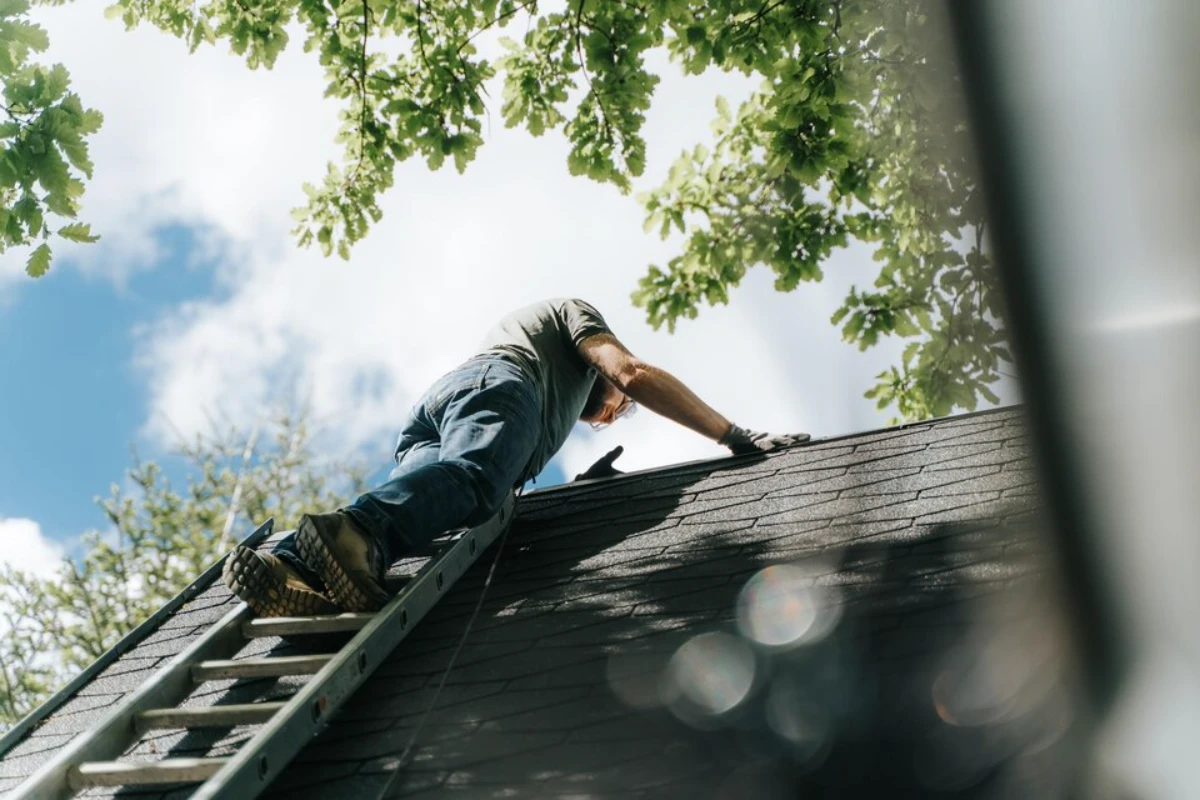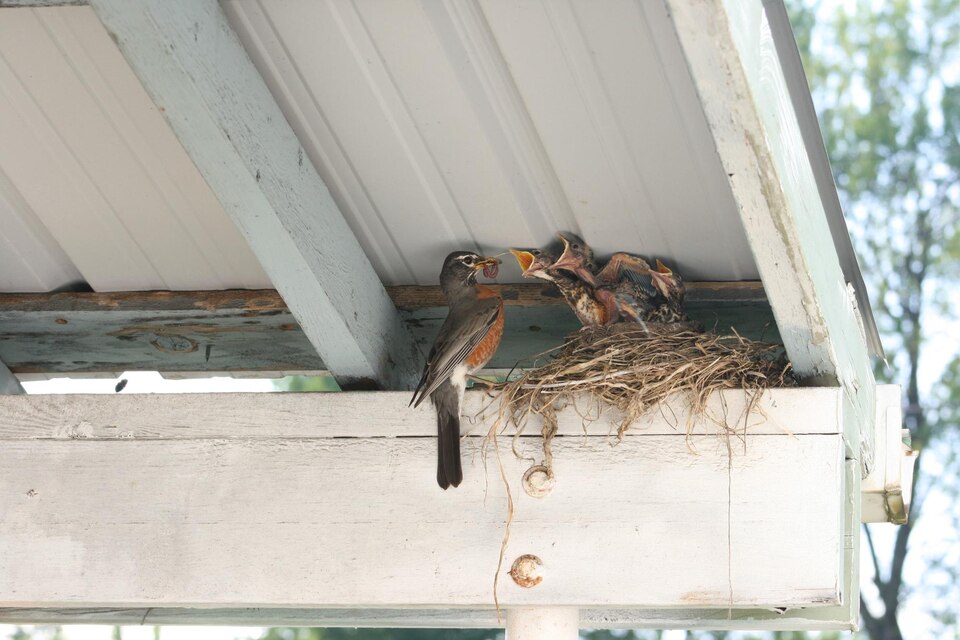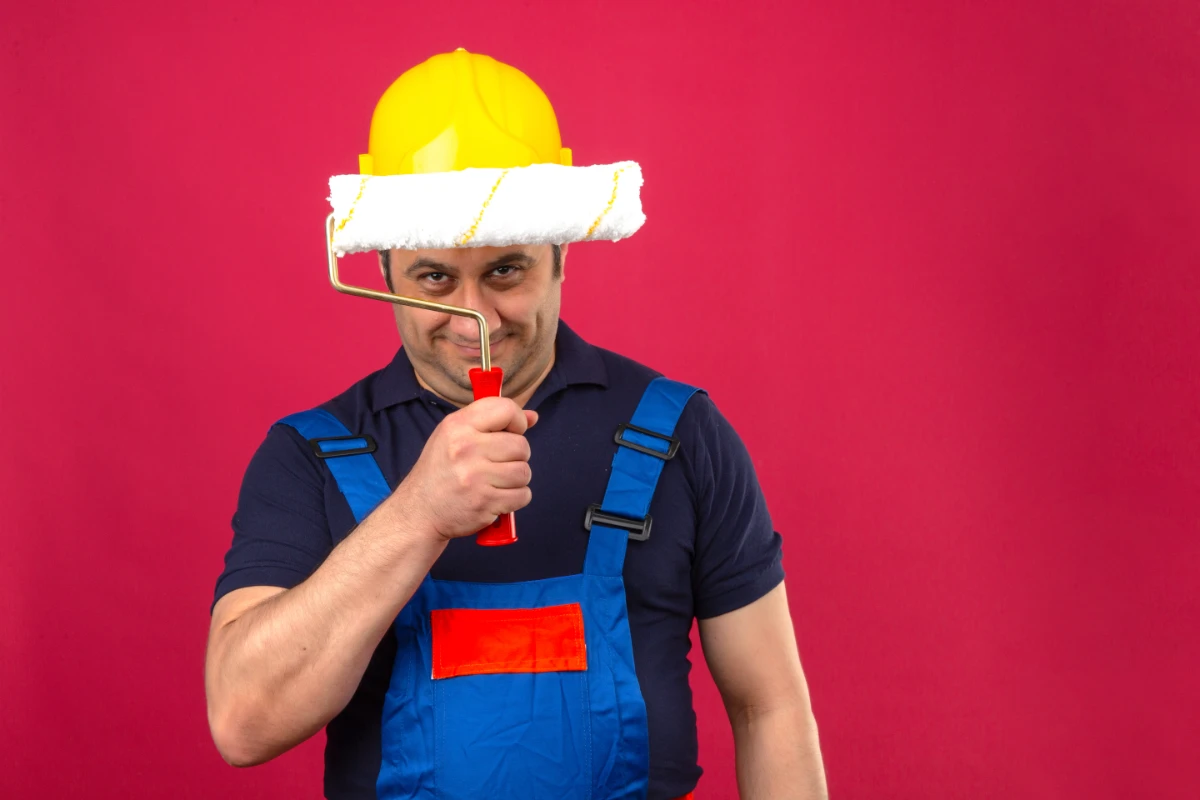Birds might seem harmless when they’re chirping in the trees, but once they settle into your roof, they can cause a surprising amount of trouble.
Nesting birds can damage shingles, block ventilation, and leave behind waste that accelerates roof deterioration. Even small species can create big problems if they’re allowed to stick around for too long. The key is stopping them before they make your roof their home.
Why Birds Choose Roofs for Nesting
Birds are always on the lookout for safe, quiet spots to build their nests. The nooks and crannies of a roof like vents, eaves, and gutters offer the perfect shelter from predators and weather. Certain bird species, such as pigeons, sparrows, and starlings, are especially known for seeking out man-made structures.
Unfortunately, these nesting habits can turn your home into a prime target. Once birds find a comfortable spot, they often return year after year, making it even harder to stop the problem once it starts.
The Risks of Bird Nesting on Your Roof

Letting birds take up residence in your roof might not seem like a big deal at first, but over time, it can lead to costly damage and potential health risks.
Clogged Vents and Gutters
Nests can block ventilation systems and rainwater drainage, leading to moisture buildup, leaks, or even fire hazards in the case of dryer vents.
Damage to Shingles and Roofing Materials
Birds peck, scratch, and pull at roofing materials to build nests, which can leave your roof vulnerable to leaks.
Corrosive Droppings
Bird droppings are acidic and can deteriorate roofing materials over time.
Pest Attraction
Bird nests can draw insects and parasites like mites, ticks, or fleas.
Noise and Mess
Ongoing chirping, flapping, and droppings around your home can become a daily nuisance.
Effective Prevention Strategies

The best way to deal with bird problems is to make your roof an unattractive place to nest. These methods help prevent issues before they start.
Seal Off Entry Points
Start by inspecting your roof for any gaps, holes, or loose materials where birds could sneak in. Common trouble spots include:
- Roof vents
- Soffits and fascia
- Gaps under eaves
- Loose flashing
Use durable materials like hardware cloth or metal flashing to cover any openings. Make sure vents are protected with screens that allow airflow but keep birds out.
Install Bird Deterrents
There are several products that can discourage birds from landing or nesting on your roof without harming them:
- Bird spikes – These prevent birds from roosting on ledges, ridges, or gutters.
- Sloped sheathing – Installing angled covers over flat surfaces makes it hard for birds to land.
- Bird netting – This is especially useful in large open spaces like under eaves or overhangs.
- Reflective objects or predator decoys – Shiny surfaces or fake owls can scare birds away—but they may lose effectiveness over time if birds get used to them.
Not all deterrents offer the same level of long-term protection. Items like reflective tape or plastic owls may work temporarily, but birds often adapt and return. More permanent solutions such as metal flashing, sloped coverings, or professionally installed netting tend to offer better, lasting results.
If you prefer eco-friendly options, consider motion-activated sprinklers or natural repellents like bird-safe citrus oils. These can help deter birds without creating unnecessary harm to wildlife or the environment.
Consider Your Roofing Material
Some roofing types are more bird-friendly than others. For example, tile roofs with open gaps underneath can create ideal nesting pockets, while asphalt shingles generally offer fewer accessible spaces.
Flat roofs or those with roof-mounted features like solar panels may also invite nesting if not properly maintained. Knowing your roof’s design and material can help you take more targeted steps to deter birds.
Keep Your Roof and Yard Clean
Food sources attract birds. Trim back tree branches that hang near your roof, and avoid leaving pet food or birdseed out in the open. Regularly clean gutters and remove any nesting material if you see signs birds are trying to settle in.
Schedule Regular Roof Inspections
Having your roof inspected once or twice a year by a professional can help spot early signs of bird activity. They can also recommend or install protective features that are right for your specific roof design.
What to Do If Birds Have Already Nested

If birds have already made themselves at home, the safest route is to contact a professional.
Some bird species are protected under state or federal laws, and removing active nests on your own may be illegal. Attempting DIY removal without knowing the species or status of the nest could lead to unintended legal trouble.
Here’s what the process typically looks like:
- Identify the issue. Watch for signs of nesting like chirping sounds, visible nesting material, or birds entering and exiting the same spot repeatedly.
- Confirm if the nest is active. A nest is considered active if it contains eggs or chicks. In many cases, active nests must be left undisturbed until the birds leave.
- Contact a wildlife removal expert. Licensed professionals can assess the situation, determine whether removal is permitted, and carry out the process legally and humanely.
- Clean and disinfect the area. Once the birds are gone, it’s important to safely remove nesting material and sanitize the area. Bird droppings can carry bacteria and fungi, including pathogens that cause diseases like histoplasmosis.
- Seal up any access points. After cleanup, close off the entry points to prevent birds from returning. This is also a good time to install preventative deterrents for long-term protection.
Even after the birds leave, the damage left behind shouldn’t be ignored. Moisture from droppings, parasites in nesting materials, and compromised roofing components can create ongoing issues if not addressed quickly and thoroughly.
Need Help Protecting Your Roof?
If you’re concerned about birds nesting in your roof or you’ve noticed signs of damage, the team at Stronghold Roofing & Solar can help. From inspections to repairs and protective installations, our expert Lakeland roofers are here to make sure your roof stays safe, clean, and bird-free.
For all your roofing needs in and around the Lakeland area, Stronghold is the roofing company to call. From free roof estimates to any type of roofing service, we are committed to providing the highest in materials, workmanship, and service.
FAQs – Prevent Birds from Nesting In Your Roof
How can I tell if birds are nesting in my roof?
Signs include frequent bird activity around your roofline, chirping sounds from above, nesting materials in gutters or vents, and droppings on the ground or siding.
Are bird nests on roofs dangerous?
Yes. Nests can block ventilation, damage roofing materials, and attract pests. Bird droppings can also accelerate wear and pose health risks.
What’s the best way to keep birds away from my roof?
Seal any openings, use bird deterrents like spikes or netting, and keep nearby trees trimmed. Regular roof inspections can also help catch problems early.
Can I remove a bird nest myself?
Only if the nest is inactive. Many birds are protected by law, so removing an active nest can be illegal. Always check local regulations or contact a professional.
How often should I check my roof for bird activity?
It’s a good idea to inspect your roof at least twice a year, especially before and after spring nesting season.











